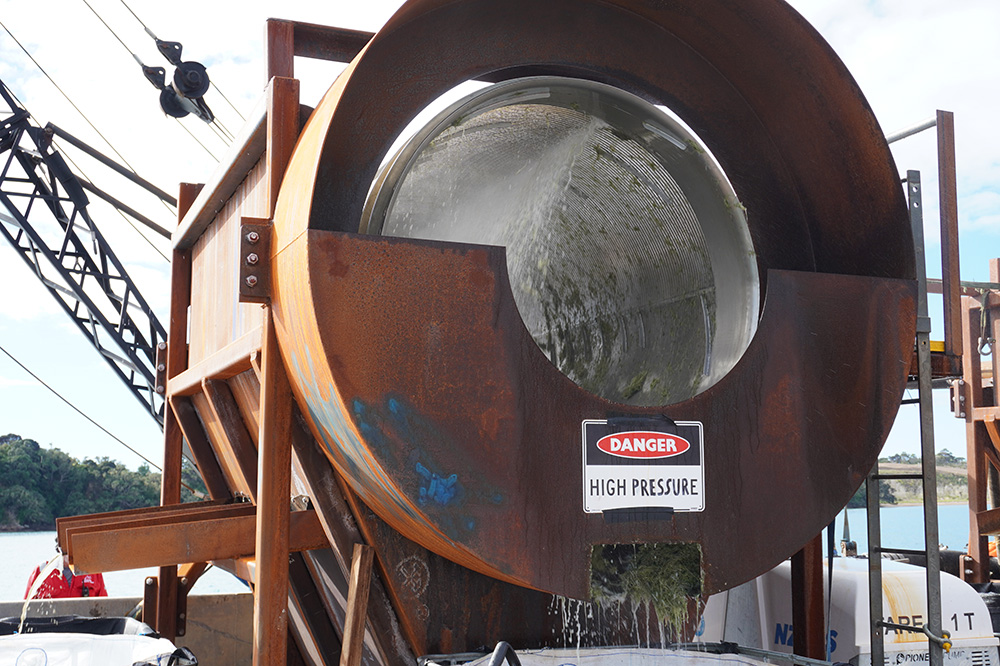Story
Creative solution to Caulerpa sand problem
Innovation continues to be at the forefront of shared efforts to remove the invasive seaweed exotic Caulerpa in Northland.
Operators, who are already using a groundbreaking powerhead attachment to effectively vacuum the unwanted weed from the seafloor at Omakiwi Cove in the Bay of Islands, have turned their attention to another challenging issue – what to do with the massive amount of sand that’s vacuumed up too.
To deal with the problem, our contractor, Johnson Bros, has created a trommel-like device, essentially a large rotating drum that separates the Caulerpa from sand and other material.
Our Marine Biosecurity Manager, Kaeden Leonard, says early tests indicate the sand separation equipment is performing better than anticipated, although it is still early days, and effectiveness may vary with different densities of Caulerpa and sand compositions.
“However, our independent scientists and council staff are optimistic about the advancements made.”
A trommel (also known as a trommel screen) is a cylindrical screening device used to separate materials by size, and is often utilised in mining, waste recycling, and environmental remediation tasks.
The trommel comprises a rotating drum mounted at a slight incline and covered with screening material with 2mm mesh. In operation, dredged material containing sand, sediment, and invasive Caulerpa is fed into the trommel.
As the drum rotates, it agitates the materials, allowing finer particles such as sand and fine sediments to fall through the mesh and be collected separately, while larger items, including Caulerpa, are discharged at the opposite end.
The discarded material is then redistributed to the sea floor using large flexible tubes.
Kaeden says the critical 2mm mesh size captures the Caulerpa while allowing smaller, natural sediments to pass through, facilitating efficient separation.
The Caulerpa is then collected in one-tonne bags, enabling quick changes and transfer to a separate vessel, avoiding the need for the dredging barge to stop operations.
“This setup not only enhances the efficiency of large-scale dredging operations but also ensures compliance with environmental standards by effectively separating and managing invasive species.”

The innovative trommel at work. As the large drum rotates, it agitates the materials, allowing finer particles such as sand and fine sediments to fall through the mesh and be collected separately, while larger items, including Caulerpa, are discharged at the opposite end.

Northland Regional Council Chair Geoff Crawford with exotic Caulerpa removed from the Bay of Islands. The trommel can be see behind him.
